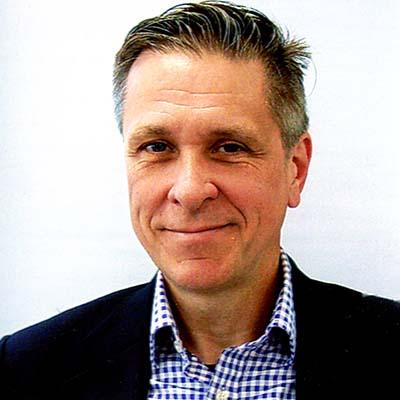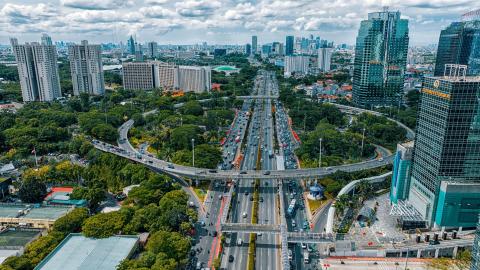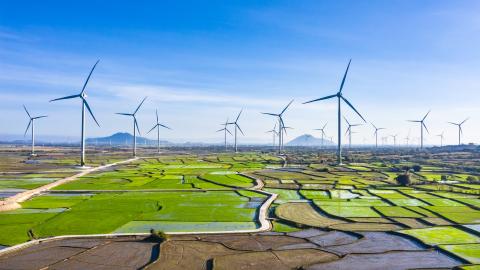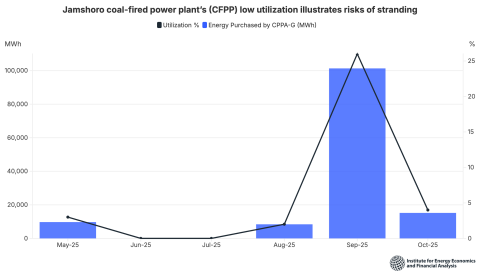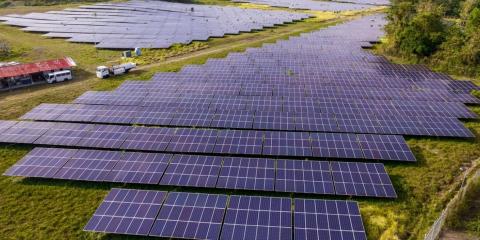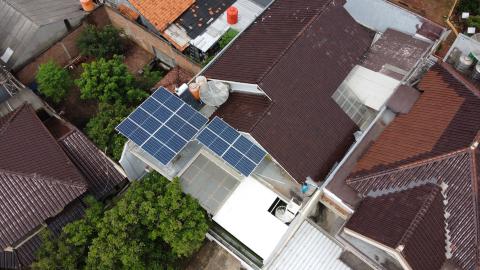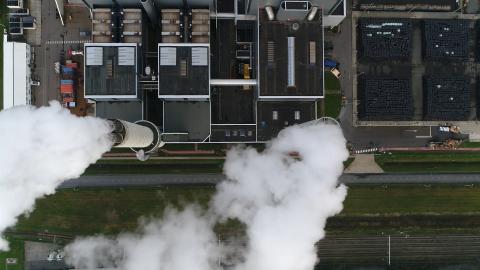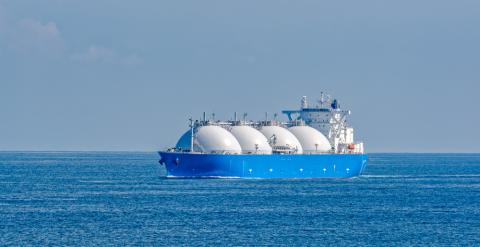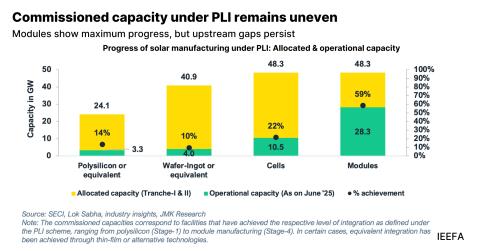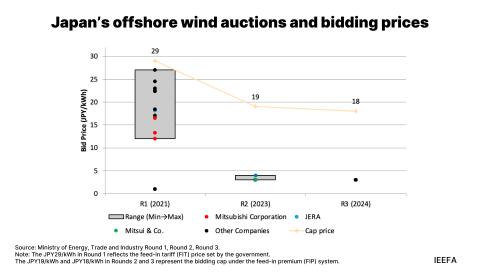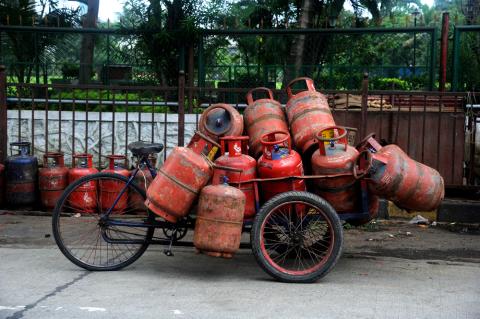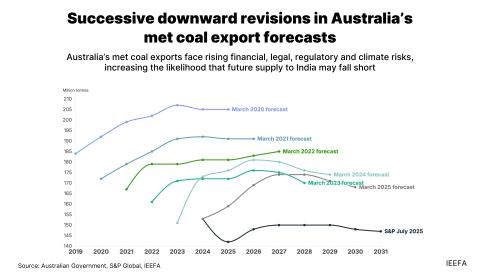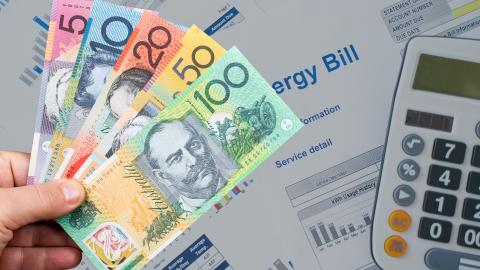Importance of project preparation in scaling the energy transition
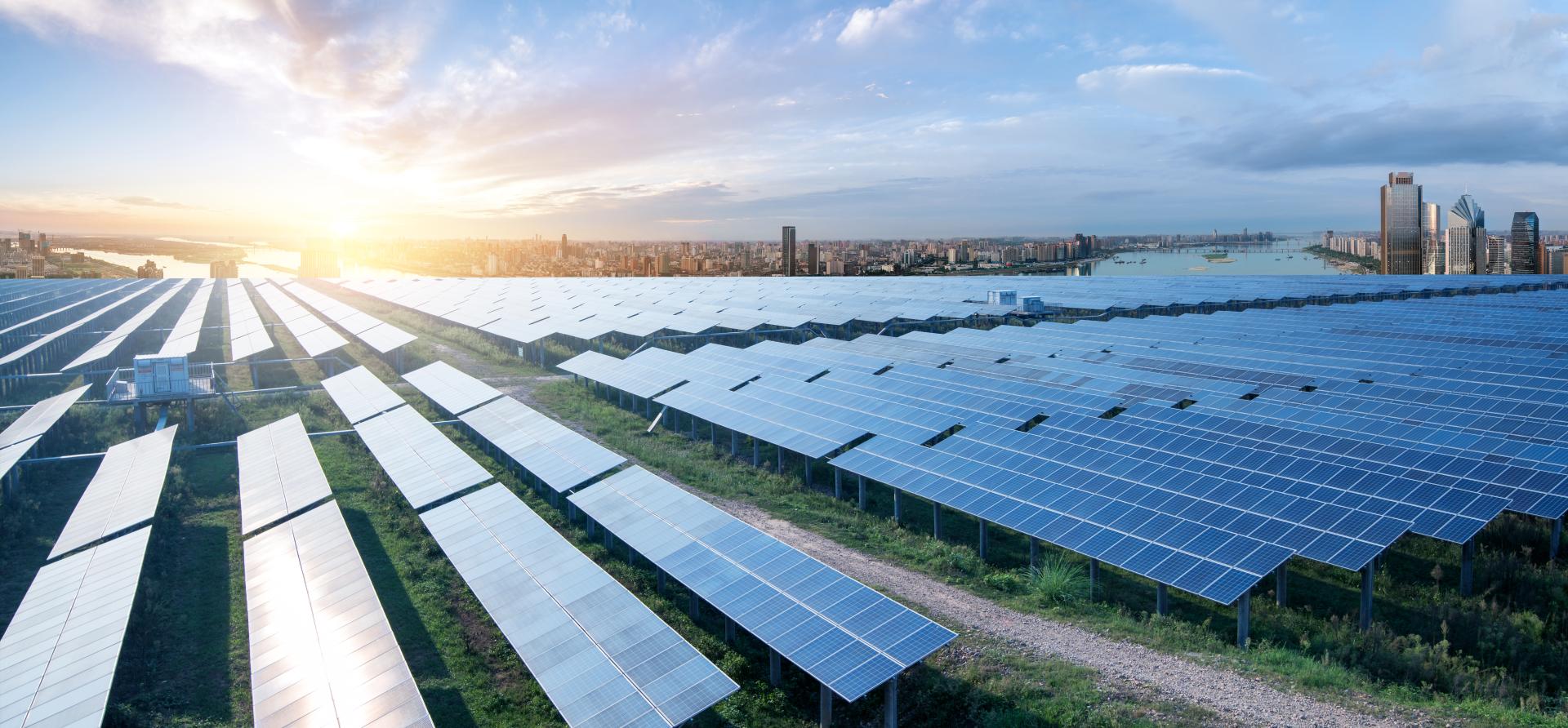
Key Findings
The costs of renewable solar and wind technologies have fallen sharply over the past decade. Consequently, these technologies are often the cheapest way to generate power with the lowest levelized cost of energy (LCOE).
One way to achieve a sustained, large-scale renewable project pipeline is to physically group a set of potential ventures. India’s expansive solar parks are a good example, aided by proactive public-private partnerships (PPPs).
Well-designed programs can lead countries towards achieving net zero, as evidenced by the successful implementation of national PPP processes in solar park projects in India and Cambodia and infrastructure development in the Philippines.
Solar parks remain highly relevant for developing countries. By grouping infrastructure for generation and transmission, benefits can be scaled, and infrastructure costs can be spread economically.
The costs of renewable solar and wind technologies have dropped rapidly over the past decade. Consequently, these technologies are often the cheapest way to generate power with the lowest levelized cost of energy (LCOE). The key determinants of a project’s success and delivery of cheap energy have shifted from cost and price to integrated development and project execution, allowing the benefits of lower technology costs to be transferred to consumers.
Uncertainties in securing land, permitting, and transmission access create risks that lead to additional costs. These risks are most directly reflected in increased financing costs, whether through premiums lenders charge or increases in investors’ expected returns, to compensate for project implementation unpredictability. However, there are proven structures and processes that can help countries realize the benefits of falling renewable energy costs.
India blazes a trail in solar parks
One way to achieve a sustained, large-scale project pipeline is to physically group a set of potential ventures. Groundwork such as procuring and developing land, obtaining environmental clearances, planning for essential services (such as provision of water and utilities), and creating network infrastructure (such as power substations, grid connectivity, and distribution connections) can occur as an “umbrella activity” for an entire set of projects. Once done, individual developers can focus on establishing renewable power generation facilities.
India’s large-scale solar parks are a good example. Aided by proactive public-private partnerships (PPPs), these solar parks were initiated in 2010 through the development of the 4,900-acre (2,000-hectare) Charanka solar park in Gujarat. The central and state governments and state utility company cooperated to bring together disparate elements of publicly controlled land, planning and permitting to form the park. With a total envisioned capacity of up to 590 megawatts (MW), solar park generation capacity was competitively procured from private sector investors in blocks of 50MW to 100MW.
Since then, India has leveraged this model to its national benefit. Successive solar parks have been added under the scheme, resulting in more than 39 gigawatts (GW) of approved solar capacity spread over 57 solar parks, with more than 10GW of capacity already operational. Each has the potential for further growth through future phases. Over a dozen developers have generation block allocations at the country’s largest solar park, the 14,000-acre (5,665-hectare) Bhadla project in Rajasthan.
India’s Ministry of New and Renewable Energy has promulgated the even larger Ultra Mega Solar Power Project initiative under various modalities to target the central government’s goal of installing 500GW of renewable energy capacity by 2030.
Scale and standardization reduce investor risks and lower consumer costs
The concentration of solar generators in one park allows for high economies of scale in supporting infrastructure. The most important and expensive element is the interconnection to the national transmission grid. Ensuring the right-of-way for transmission and prearranged utility interconnection points helps erase some of the most significant hurdles facing solar projects. This is particularly important in countries with challenging permitting and land rights regimes.
With such infrastructure challenges addressed, substantial project risks are minimized, and developer-bidders have clarity on capital costs and implementation timelines. The predictability of outcomes is further enhanced by transparent public auctions for set capacities under standard terms and conditions. This allows bidders to negotiate lower financing costs owing to higher confidence among prospective lenders. Subsequently, individual generation investors can focus on delivering the lowest-cost, optimally designed solar facility.
Solar parks foster competition. Open tenders level the playing field and encourage developers to innovate to achieve optimized cost structures. While large, mainstream players have traditionally participated in one-off utility project tenders, the solar park model, with its multiple block auction approach, has encouraged the formation of new project development companies. The result is that consumers benefit from lower power prices.
Lowest solar tariffs achieved through government support in Cambodia
Government-assisted solar parks remain highly relevant for developing countries in particular. The Cambodian government partnered with the Asian Development Bank (ADB) on the National Solar Park Project (NSPP), providing public sector land, transmission interconnections, and site access, while the ADB offered co-financing to the winning bidders. Despite the country’s perceived higher-risk investment environment, in 2019, the first phase of tendered auction prices was among the world’s most competitive, with the first block achieving USD3.9 cents per kilowatt hour (¢/kWh) and, later, in 2020, the second block followed at a record low USD2.6¢/kWh. Cambodia aims to expand the NSPP to create an overall 2GW of solar capacity.
Leveraging favorable partnership policies in the Philippines
In 2010, the Philippines revitalized its public-private partnership (PPP) mechanism by establishing a government PPP center. This was followed by the creation of a Project Development and Monitoring Facility (PDMF) with a revolving fund to support government agencies in preparing projects for private investment tenders. Government contributions to the PDMF were supported with matching grants from Canada and Australia. The PDMF helped retain a pool of professional engineering, legal, and financial advisory firms advising agencies on structuring projects and supporting contracts before issuing tenders for competitive bidding. The Philippines’ success is measurable in the number of projects - over 100 PPP projects have been financially closed and implemented, with dozens in the development and bid stages at any given time.
Maximizing private sector participation to meet decarbonization targets
Countries need to significantly expand their sustainable energy investments to meet national decarbonization targets. Leveraging private sector investment is the key to achieving scale. Governments can lead the way to net zero through well-designed programs, as evidenced by the successful implementation of national PPP processes in solar park projects in India and Cambodia, as well as infrastructure development in the Philippines. A pool of derisked projects supported by transparent, standardized tendering, evaluation, and contracting procedures provides confidence to prospective private sector bidders. This structured, systematic approach can help countries to repeatedly achieve successful investments in critical decarbonization projects in collaboration with the private sector.
This article was originally published on the UNESCAP website in an amended version.

